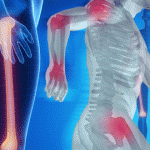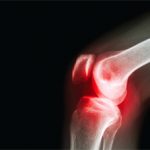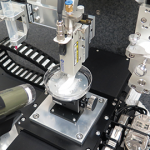Level 3 Established Patient E&M Visit A 43-year-old patient is seen in the office for a follow-up visit of her RF-positive rheumatoid arthritis and primary osteoarthritis of the left knee. The patient is on sulindac, methotrexate and folic acid. At her last visit, the patient’s methotrexate dose was increased, which has greatly reduced her pain….
Search results for: weight
Mesoblast Cell Treatment Shows Promise in Rheumatoid Arthritis
(Reuters)—Mesoblast Ltd. on Monday said its experimental stem-cell treatment led to significant improvements of symptoms and disease activity in patients whose rheumatoid arthritis had stopped being helped by widely used biotech medicines, according to data from a mid-stage trial. Treatment with the Australian company’s mesenchymal precursor cell (MPC) product, MPC-300-IV, was deemed well tolerated with…

Ultrasound May Be Useful for Grading Rotator Cuff Tendinopathy
Researchers have developed procedures and assessed their efficacy for the use of ultrasound images to measure the inter-rater reliability of the measurement of structural changes in the tendon of patients with supraspinatus tendinopathy. The standardized procedures proved useful in evaluating patients…
Women on Osteoporosis Drugs Still Need Bone Density Screenings
(Reuters Health)—Women with osteoporosis who take bisphosphonates to help avoid fractures still need to have their bone density monitored, a Canadian study suggests. Researchers who studied more than 6,600 women taking osteoporosis drugs found that for nearly one in five, bone mineral density at the hip actually decreased after the women started taking the medication….

Exercise Therapy Recommended to Manage Knee Osteoarthritis
The benefits of exercise therapy for individuals with knee osteoarthritis (OA) are well known. The ACR strongly recommends both aquatic exercise and land-based aerobic and resistance exercise for managing knee OA.1 A recent Cochrane systematic review and meta-analysis concluded that high-quality evidence supports the use of exercise to reduce pain and improve physical function and…

3D Printing in Rheumatology Holds Promise for External Devices, Joints
When Abby Paterson, PhD, started her doctoral work in product design and technology at Loughborough University in the United Kingdom in 2009, she says 3D printing was little known by clinicians or the general public. Now, the technology is seemingly everywhere. For Dr. Paterson, the advancing science has led to a promising project focused on…

Rheumatology Case Report: Concomitant Lupus with Features of Scleroderma, Castleman Disease
We report a case of a 27-year-old woman who was initially diagnosed with systemic lupus erythematosus (SLE), had features of scleroderma and was subsequently found to have lymph node biopsy consistent with multicentric Castleman disease (MCD). She also had serologic evidence of acute Epstein-Barr virus (EBV) infection (vs. reactivation of EBV). The occurrence of MCD…

Why Rheumatologists Should Focus on Patients’ Cardiovascular Health
Baseball is a great sport. It’s fascinating to watch the evolving duel between pitcher and batter. As the former employs their remarkably powerful and versatile rotator cuff and forearm flexor muscles to hurl blazing pitches, the latter engages their exceptionally honed hand–eye neural link to make contact with the ball. Baseball is the ultimate summertime…
Arthritis Prevalence on the Rise, Creating Challenges for Healthcare System
Updated projections suggest that arthritis and arthritis-attributable activity limitation will remain large and growing problems for clinical and public health systems, which must plan and create policies and resources to address these future needs. By 2040, the number of U.S. adults with doctor-diagnosed arthritis is projected to increase 49% to 78.4 million. Can the healthcare system accommodate these projected increases? Not without changes. By 2025, the expected demand for rheumatologists is expected to exceed supply by 2,576 adult and 33 pediatric rheumatologists…

Antiphospholipid Antibody Syndrome Puts Pregnant Women at High Risk of Preeclampsia
A recent review investigated risk factors for preeclampsia in early pregnancy, finding that antiphospholipid antibody syndrome may be the strongest risk factor. As a result of these findings, researchers have compiled a list of risk factors to help clinicians determine which women are more likely to develop the condition and aid them in weighing treatment options…
- « Previous Page
- 1
- …
- 58
- 59
- 60
- 61
- 62
- …
- 93
- Next Page »